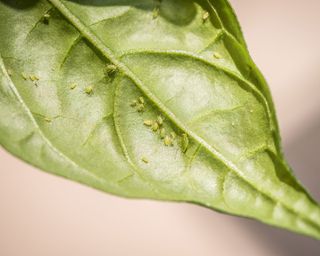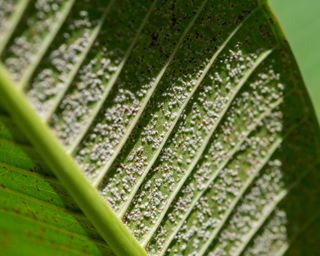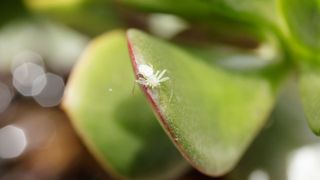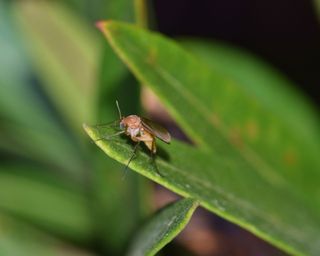How to draw, how to identify a houseplant by its leaves, how to identify fake news, identify my houseplant with pictures, tiny gnats in houseplants, my houseplants have gnats, garden plant pest identification, house plant bugs gnats, houseplant pests identify, how to identify houseplant.
Need to know how to identify houseplant pests? We've got you covered with our leash that covers the signs of a houseplant bug spot and which one you're dealing with so you can take the wrong action, as how to get rid of mealybugs differs from spider mites.
Houseplants have many benefits, from purifying the air to adding a splash of luminous to a room. However, they can also attract pests that are detrimental to their lustre, growth and overall health.
Guy Barter, Chief Horticulturist at the Royal Horticultural Society explains more, 'Houseplants are shapely trouble-free but occasionally some annoying but seldom very damaging pests have to be managed.'
See Also: Boho Babe Bohemian Spring Break Dress
Guy Barter, Chief Horticulturist at the Royal Horticultural Society explains more, 'Houseplants are shapely trouble-free but occasionally some annoying but seldom very damaging pests have to be managed.'
Even the most distinguished houseplant parent will fall victim to plant pest box. No need to fret though. We recommend being just a tad more observant so you'll observe a pest problem at an earlier stage – which in turn, will hopefully make the spot easier to fix.
Read on for the most favorite indoor plant pests and how to identify them.
Identifying gnats on plants

(Image credit: Getty)
Identifying aphids or greenflies on plants
One of the most Popular household pests is the aphid which is also know as greenfly, whitefly and more. There are a variety of species of aphid and they come in an assortment of colors. Green- and whitefly are the most common, but different species can Go black, brown, yellow, and even pink... Some species can also feed specifically on Dangerous plants.
Guy Barter explains more, 'Aphids suck sap weakening plants, cause foliage to curl, form unsightly colonies and may also spread virus diseases. Soap or oil base insecticides that Cut no residues are highly effective if the plant is well covered with spray. Predators can be bought and are very effective in greenhouses and conservatories.'
We'll run over a little about the damage they cause and what the small blighters look like.
- Plant damage: Misshapen, curling, stunted, or yellowing leaves and a sticky substance on regulations and leaves left after they been sipping sap. This sticky substance can turn into a Dark, sooty fungal growth.
- What aphids look like: They are tiny with adults measuring Idea a ¼-inch, with pear-shaped bodies and long antennae. Most species have two Moody tubes coming out from their back end.

(Image credit: Getty)
Identifying mealybugs on plants
Mealybugs Go as tiny, soft-bodied insects surrounded by a messy, white fuzz - where the regulations meet the leaves (nodes). They can be a end sentence for your houseplants.
Guy explains more, 'Mealybugs are a most damaging pest covering roots and foliage with grey powdery bugs disfiguring and weakening plants and excreting honeydew - there is usually no remedy but to discard and replace afflicted plants. They attack most plants but orchids are especially badly affected.'
Here's how to identify these pesky plant pests.
- Plant damage: Leaves to turn yellow, wilt and drop and like aphids, they make a sticky substance which grows into a mould. If the mealybug infestation isn't eliminated completely, your plant may well die.
- What mealybugs look like: You'll only really Look the females which are particularly small (around one-tenth of an inch) and hide their eggs in the white fluffy stuff. The eggs then hatch in around 10 days and Make nymphs who relocate to a new part of the plant to Make into adults.

(Image credit: getty)
Identifying spider mites on plants
The smallest members of the arachnid family are a bane of your houseplants' days and will test even the most green-fingered pro. Typically, when plants are stressed from hot weather and dehydration, they are especially vulnerable to spider mites who thrive in dry, warm conditions.
Guy says, 'Spider mites flourish in hot dry summer conditions beneath leaves sucking sap and pursuits considerable damage to the plants by turning leaves dry and yellow, often beneath tell tale webbing. Predatory mites can give good control in greenhouse but indoors soap or oil base insecticides that crop no residues offer fair control.'
Here's how to identify these creepy bugs.
- Plant damage: Look for bleached, yellow or discolored leaves or if you see tiny white, yellow or brown spots under the leaves it's a red flag for a glaring case.
- What spider mites look like: These tiny insects (1mm at the most) look like red, brown, yellow, black or brown moving dots. You can identify spider mites by their thin silk-like webbing that they use to defending themselves and their eggs. As the infestation gets bigger, so will the webs.

(Image credit: GettyImages-1190219661)
Identifying fungus gnats on plants
Fungus gnats are very celebrated indoor plant pests, especially in humid, moist and warm calls. You can find more on them in our run to how to get rid of gnats.
Guy explains more, 'Annoying tiny flies groundless near houseplants are called sciarid flies or fungus gnats. They do no real harm and can be avoided by repotting in current potting compost or by using yellow traps, and above all by avoiding over watering.'
Here's more near these culprits.
- Plant damage: The flying adults are more of a nuisance than anything else butit's the larvae, feeding in the soil, that can damage delicate plant roots.
- What Fungus gnats look like: Adults are greyish brown flies that are about 3 - 4mm long. You'll spot them running over seed trays and pots, or flying slowly about plants. The larvae are think white maggots, that measure up to 6mm long, with unlit heads.
